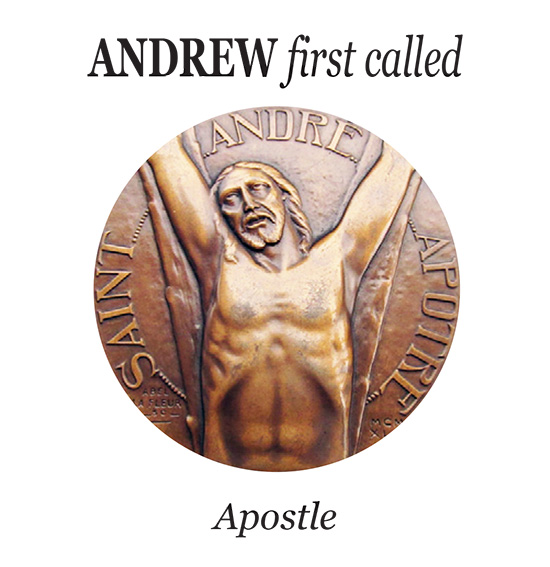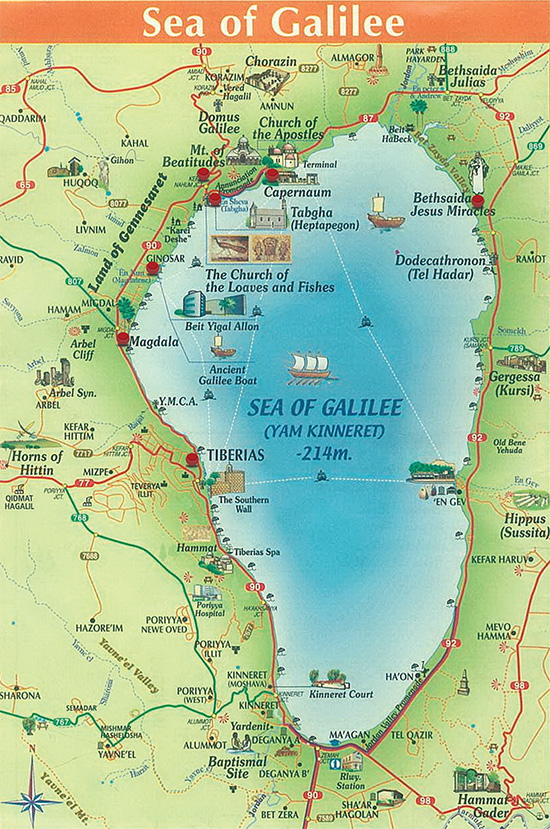Andrew and his brother Simon were sons of Jonah, born in the village of Bethsaida on the northern shore of the Sea of Galilee. The two brothers were fishermen by trade. Andrew had been a follower of John the Baptist, the one who was preaching repentance.
Andrew was present with John the Baptist the day Jesus approached to be baptized in the Jordan River. A dove (symbol of the Holy Spirit) flew just above Jesus’ head and John said the words, “…Look, the Lamb of God, who takes away the sins of the world!” John 1:29 Andrew at once recognized Jesus as the Messiah and rushed to tell his brother Simon about Jesus. (John 1:41)
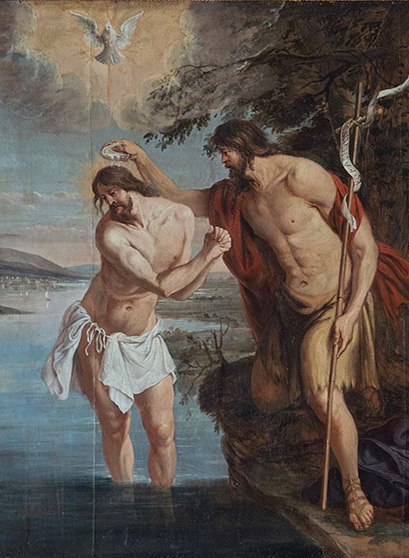 The Baptism of Jesus Christ by Michael Angelo Immenraet, c. 1673-78,
The Baptism of Jesus Christ by Michael Angelo Immenraet, c. 1673-78,
Unionskirche, Idstein, Germany
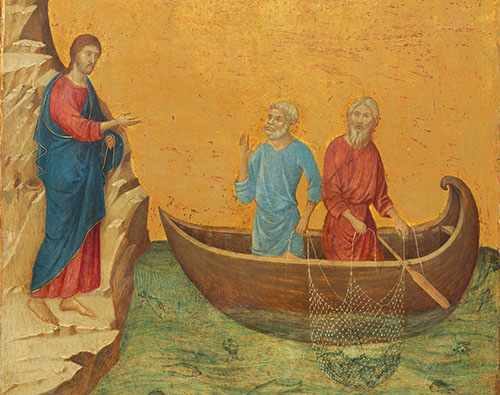 The Calling of the Apostles Peter and Andrew by Duccio di Buoninsegna, c. 1308-1311, part of the Samuel H. Kress Collection at the National Gallery of Art, Washington, DC
The Calling of the Apostles Peter and Andrew by Duccio di Buoninsegna, c. 1308-1311, part of the Samuel H. Kress Collection at the National Gallery of Art, Washington, DC
At the beginning of Jesus’ public life, Andrew and his brother were said to have lived in the same house as Jesus in Capernaum, on the northern shore of the Sea of Galilee.
The gospels tell us that Andrew was the one who told Jesus about the boy with the loaves and fishes (John 6:8-9), which took place in Tabgha, just 3 miles from Capernaum.
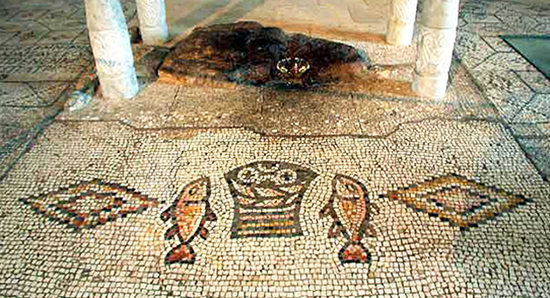 Altar of Church of Loaves and Fishes in Tabgha, Israel
Altar of Church of Loaves and Fishes in Tabgha, Israel
When Philip wanted to tell Jesus about certain Greeks seeking Him, he told Andrew first. (John 12:20-22) Andrew and the eleven were present at the Last Supper.
After receiving The Great Commission from the risen Christ on the mountain in Galilee, Andrew traveled on foot to Scythia (Romania). He preached along the Black Sea and up the Dnieper River as far as Kiev (Ukraine). Then he traveled all the way to Novgorod (Russia).
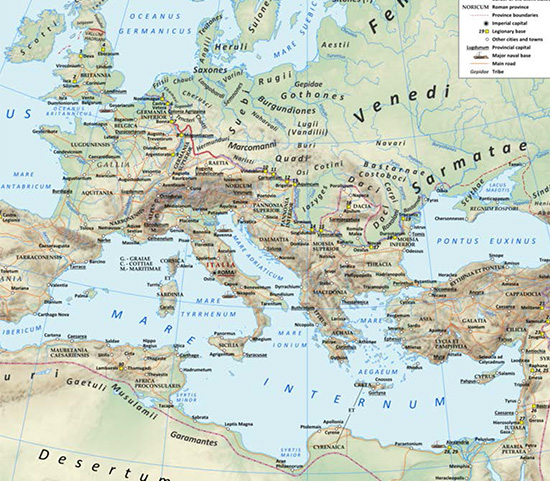 MAP of the Roman Empire in 125 AD for you to get an idea of how far the Apostles traveled.
MAP of the Roman Empire in 125 AD for you to get an idea of how far the Apostles traveled.
Andrew was martyred by crucifixion at the city of Patras in Greece. Andrew was bound, not nailed, to an X-shaped cross, or “saltire” (now the saltire is commonly known as “Saint Andrew’s Cross”), supposedly at his own request, as he deemed himself unworthy to be crucified on the same type of cross as Jesus.
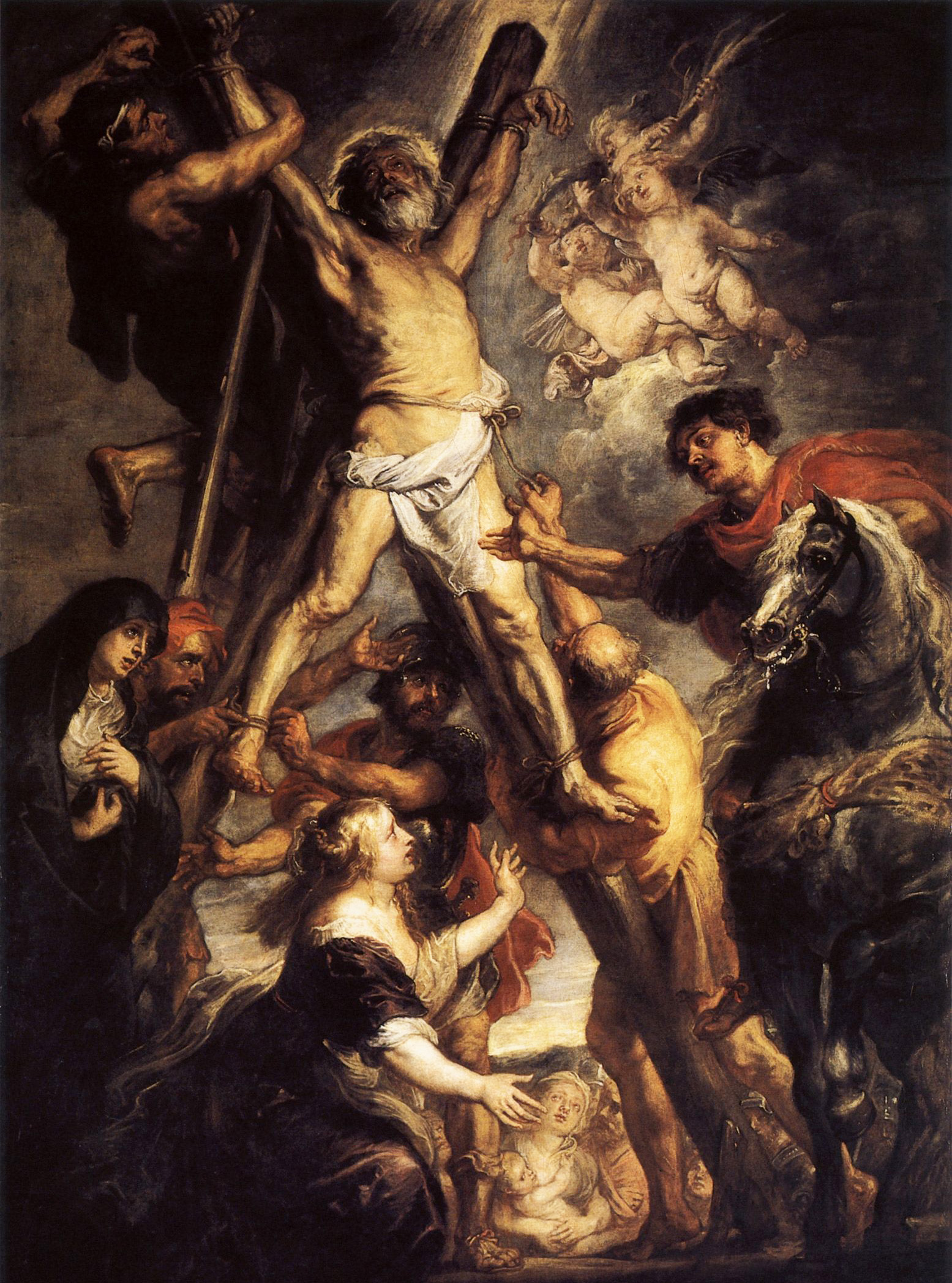 Le martyre de Saint André by Peter Paul Rubens, c.1638,
Le martyre de Saint André by Peter Paul Rubens, c.1638,
exposée à Hospital de Saint Andrés de los Flamencos, Madrid, Spain
The main relics of Saint Andrew are kept in the Basilica of Saint Andrew in Patras, Greece, although I have seen the “foot of Saint Andrew” is in the sacristy of Cathédral Saint-Sauveur in Aix-en-Provence, France.
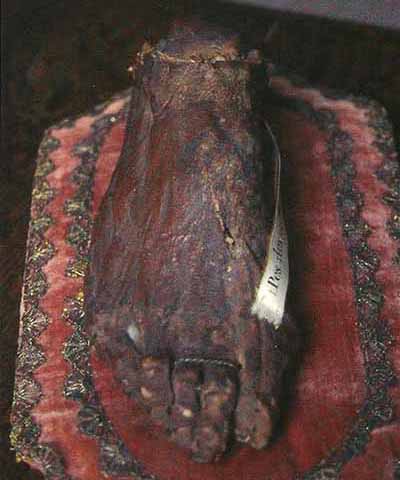 The right foot of Saint Andrew, Cathédral Saint Sauveur in Aix-en-Provence, France
The right foot of Saint Andrew, Cathédral Saint Sauveur in Aix-en-Provence, France
And in Rome, one of the four main pillars of Saint Peter’s Basilica is dedicated to the “first called” apostle, Saint Andrew, brother of Saint Peter (1st Pope of the Catholic Church).
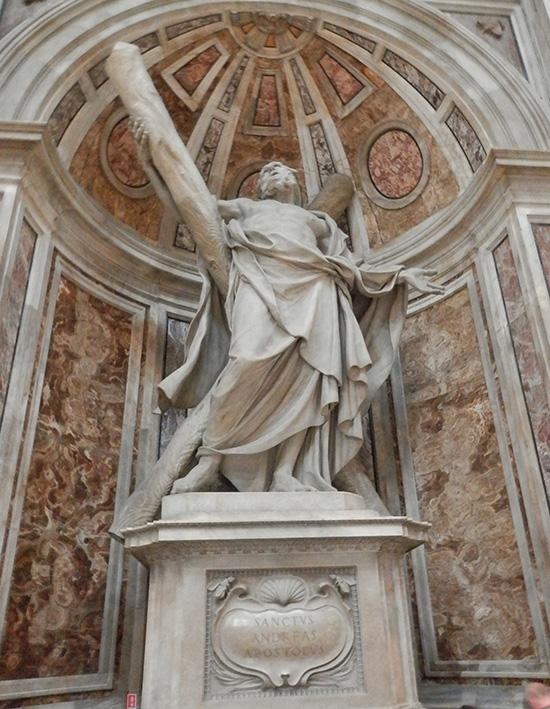 Statue of Saint Andrew at Saint Peter’s Basilica in Rome
Statue of Saint Andrew at Saint Peter’s Basilica in Rome
Saint Andrew is the patron saint of Russia, Scotland, Greece (Achaeo as well as its capital city of Patras), Amalfi and Sicily (Italy), and the Diocese of Constantinople. He is also the patron saint of fishermen, fish dealers, fishmongers, gout sufferers, women who wish to become mothers, singers and vocalists. Saint Andrew’s feast day is November 30.

